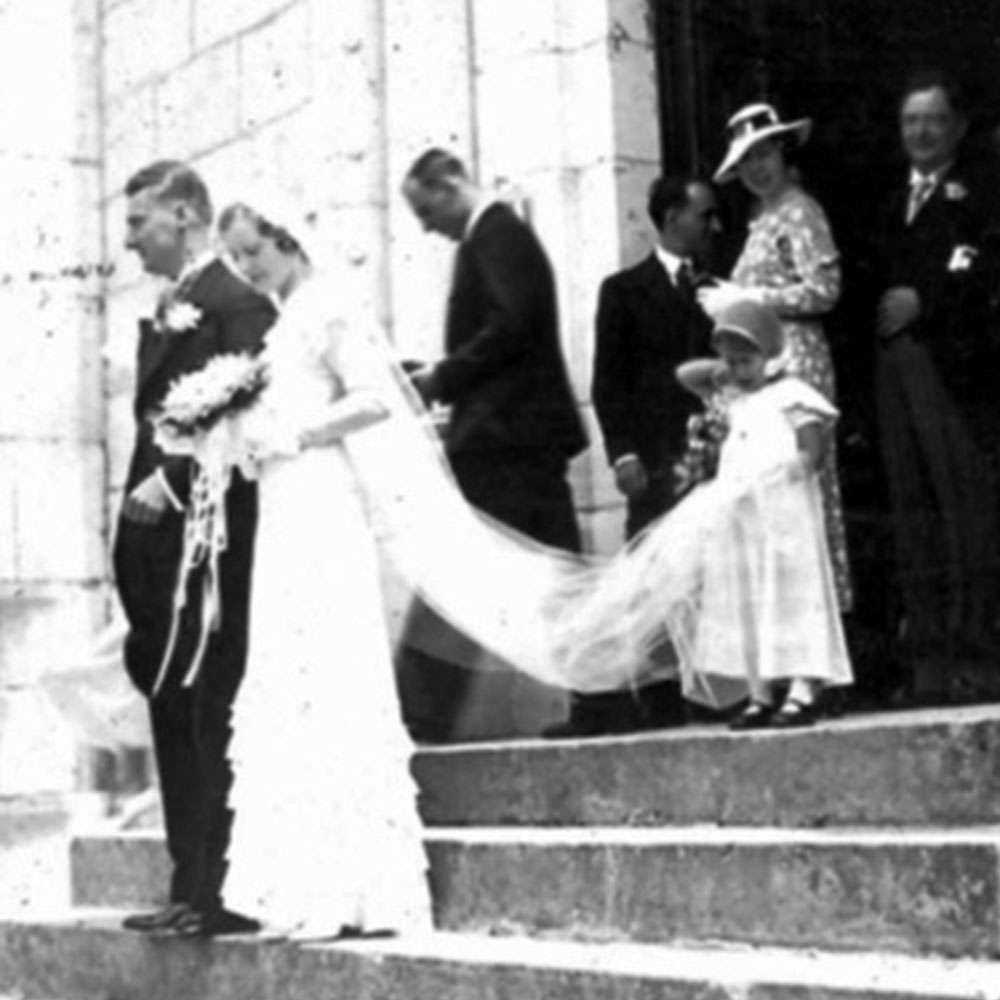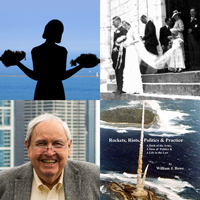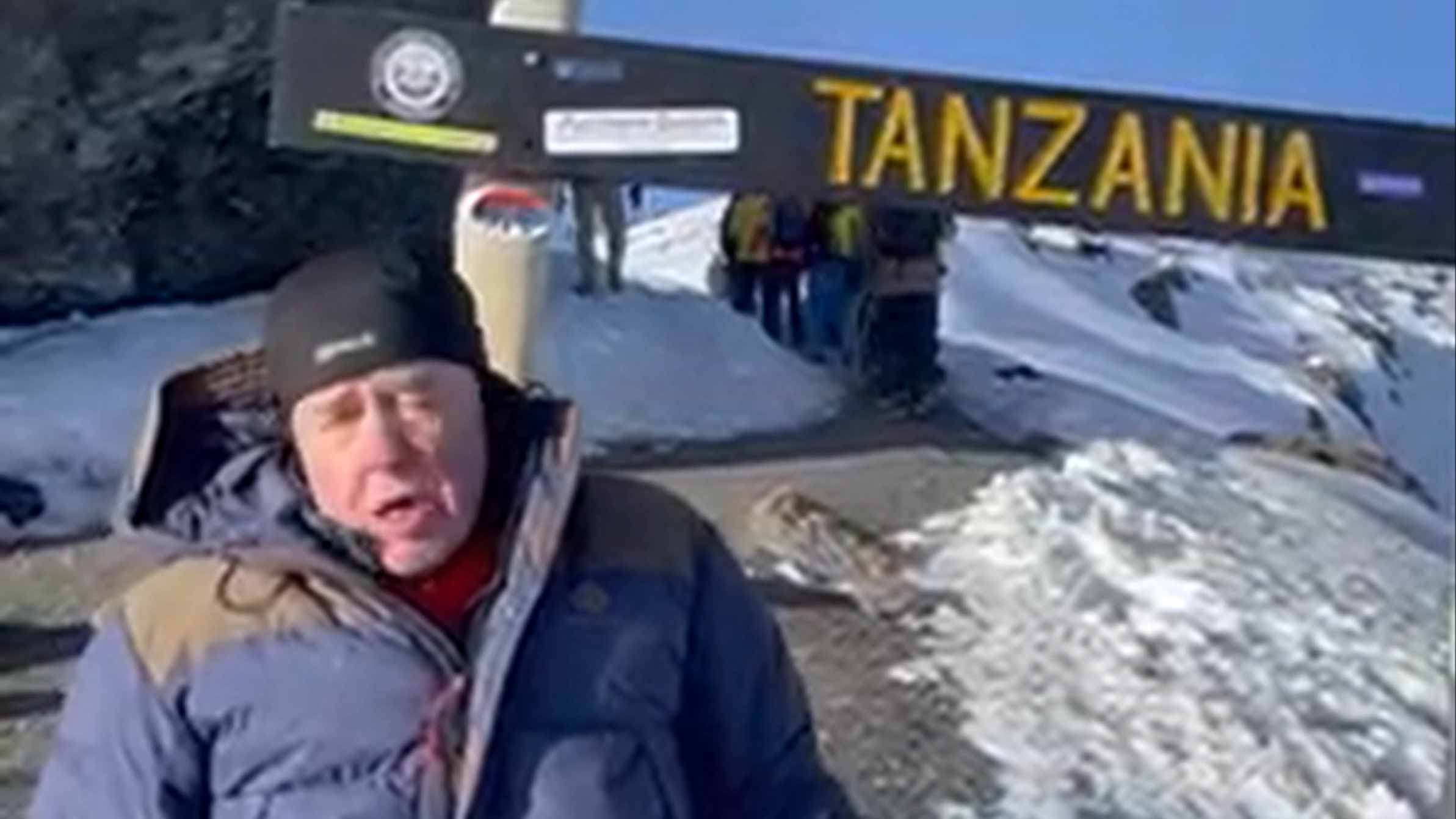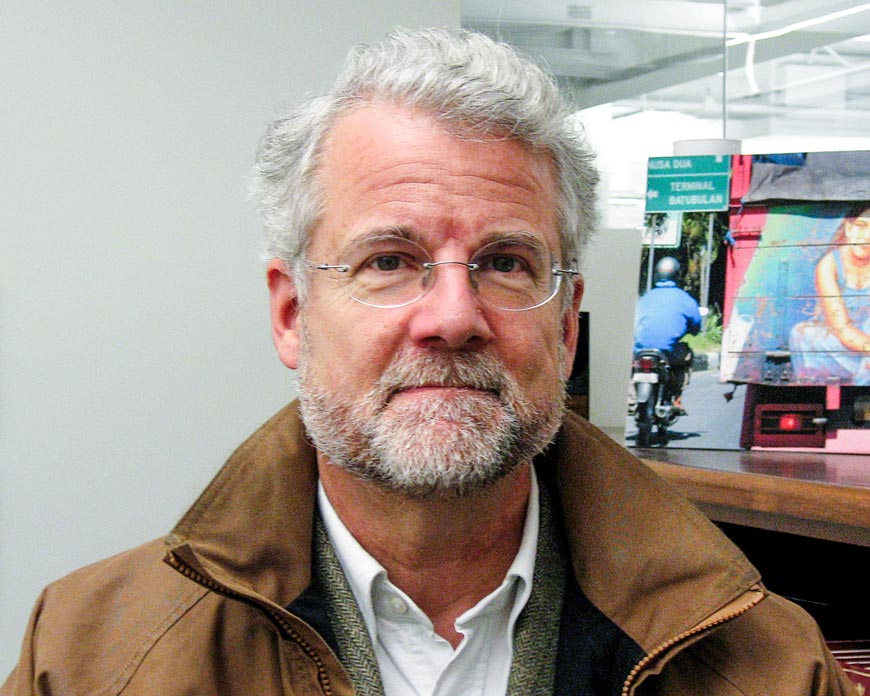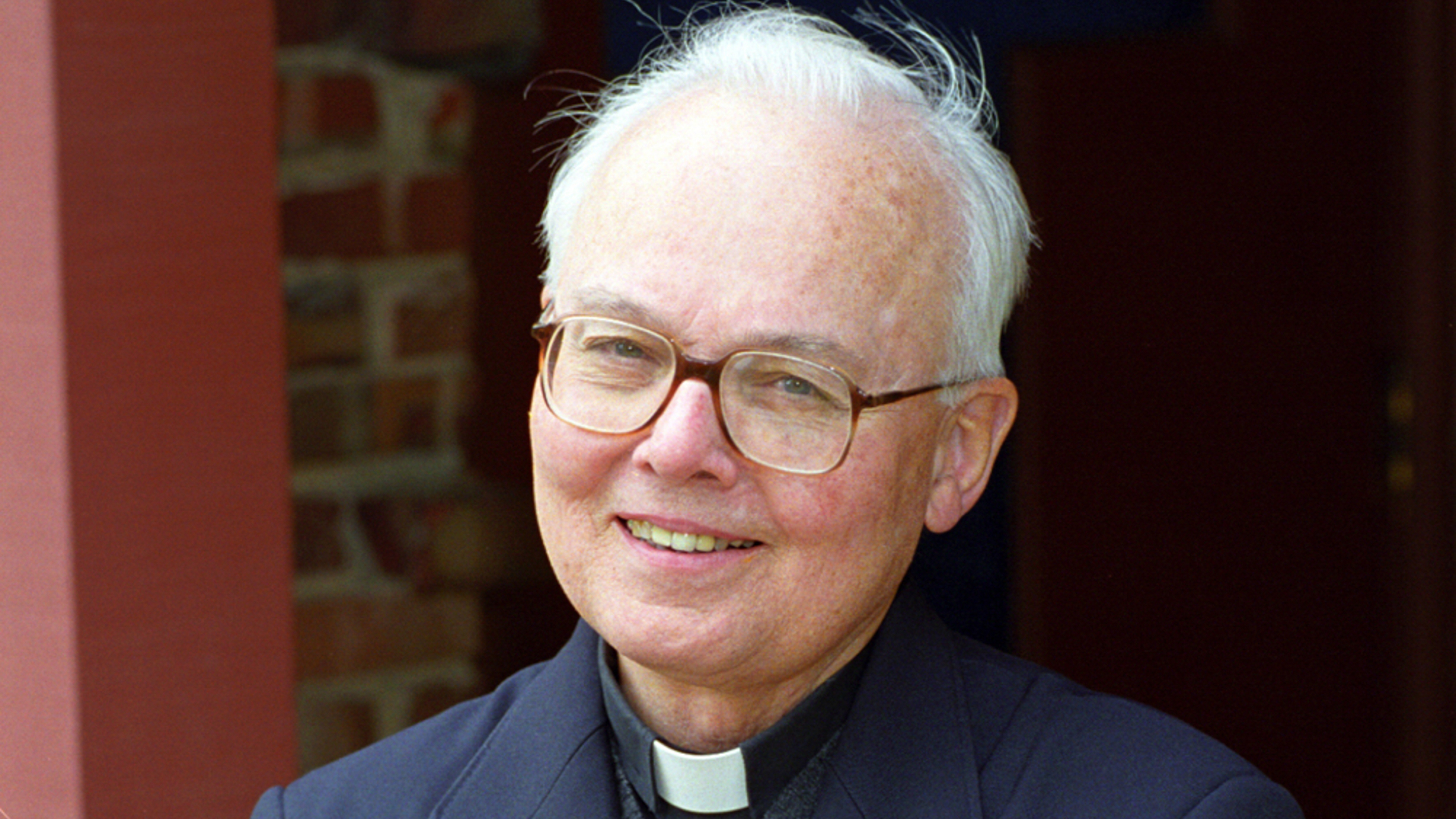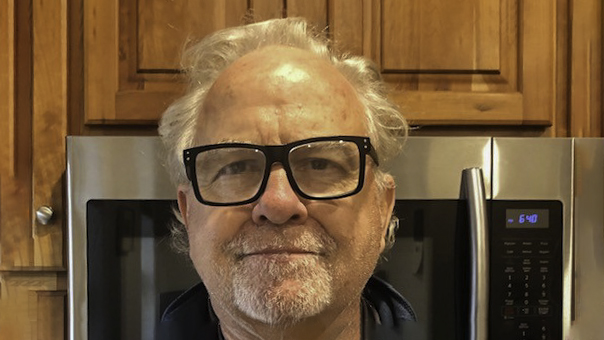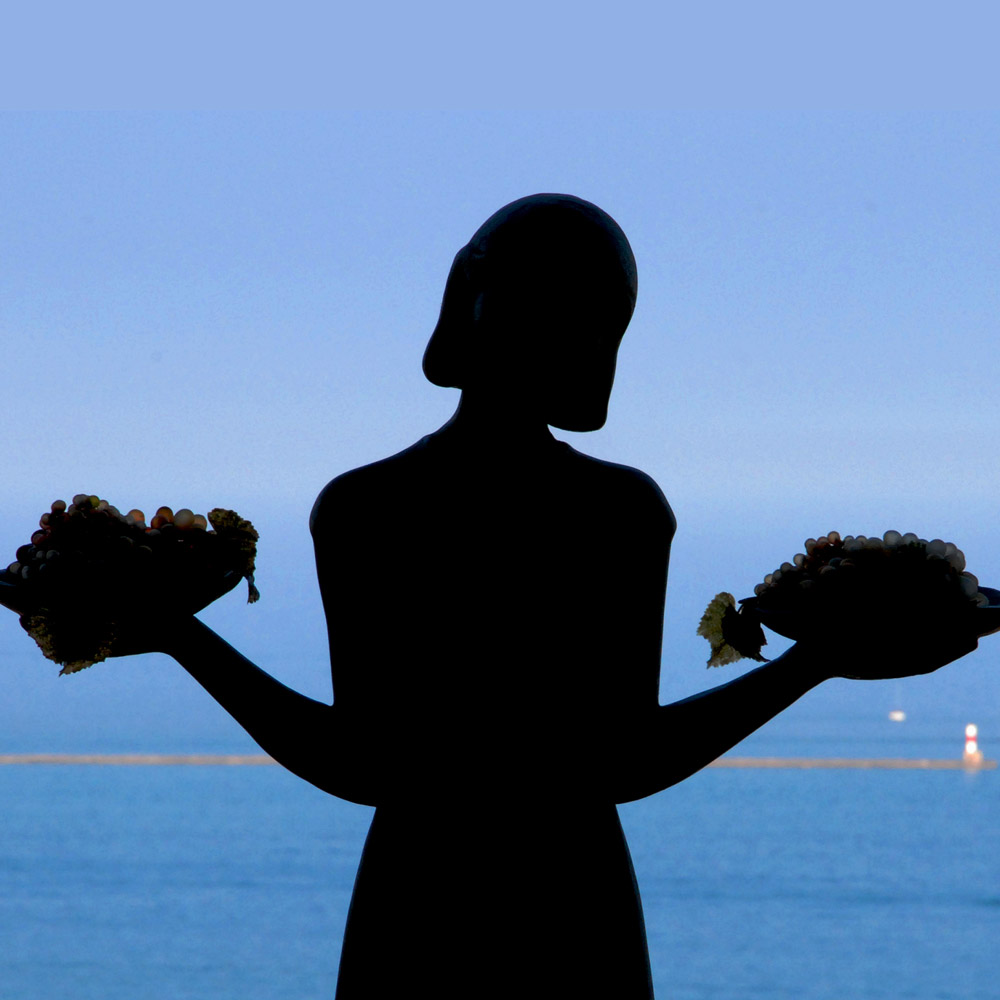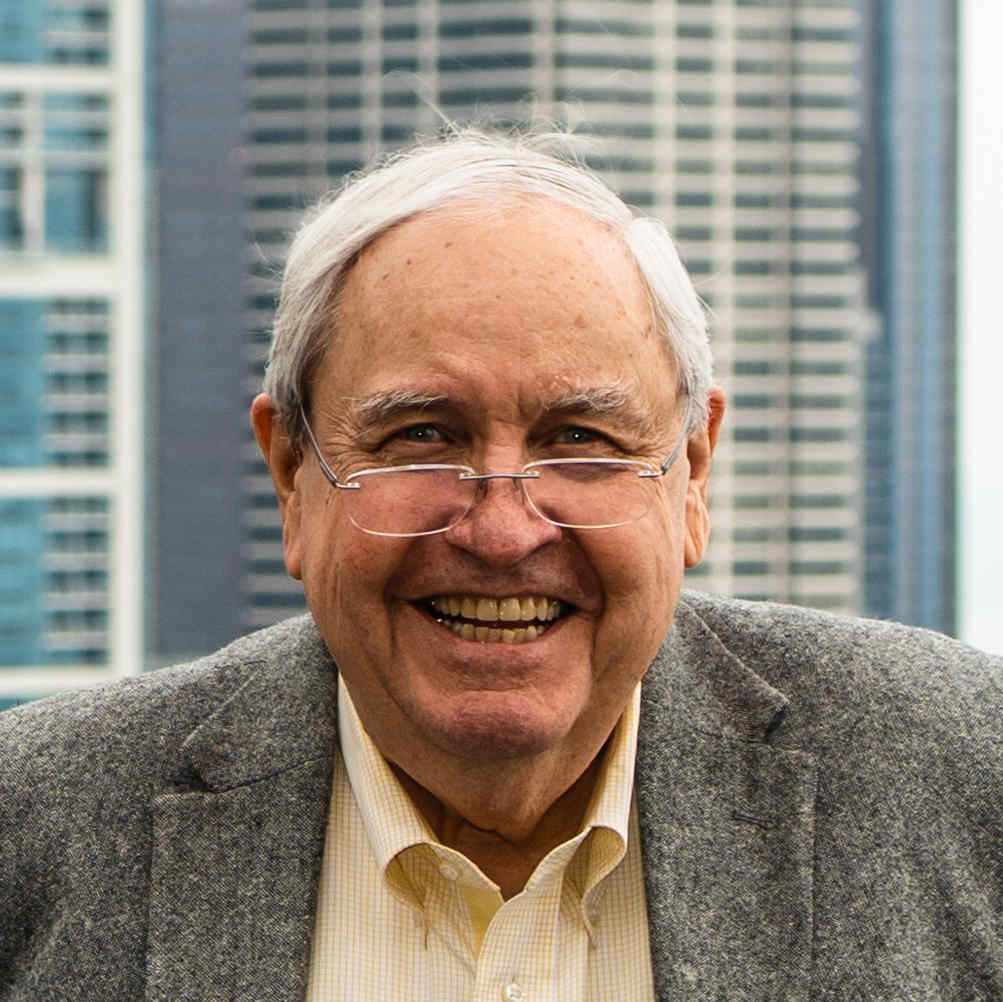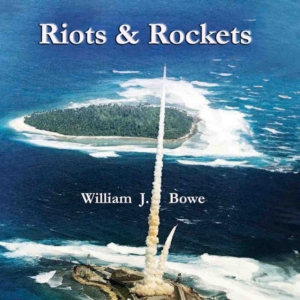Sarah Lynch on Her Family and Career
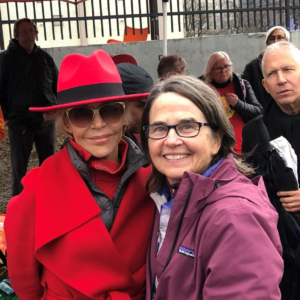
2020 Jane Fonda with Sarah Lynch DC Climate Change Protest
Editor’s Note: For some time, I had been looking forward to checking in with my cousin, Sarah Lynch. I wanted the opportunity to catch up with her because I was curious about how her parents, Frank Lynch and Susan Alling Lynch had met, and what life was like growing up in Park Forest with her siblings, Laura, David, Dan, and Austin Lynch. Park Forest was a postwar, built from scratch, planned suburb just south of Chicago. I also wanted to learn more about Park Forest because I had seen its French counterpart in the Parisian planned Parisian suburb of Villepreux. Villepreux had been developed by another member of my extended family, Jacques Riboud, the husband of my mother’s sister Nancy Gwinn Riboud.
Park Forest had been made famous early on in William H. Whyte’s 1956 book The Organization Man. When I read the book in one of my sociology courses in college in the early 1960s, it critically described the inhabitants of this planned from scratch suburban suburb as being filled with “organization men.”
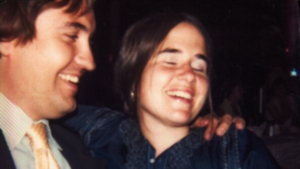
1977 Bill Bowe and Sarah Lynch Roberta Lynch Terpstra’s Wedding
Whyte described these family heads as men of modest aspirations who were looking for a good job with adequate pay, a pension, and a new house amidst others looking for the same things. He tone seemed to catalog these folks as some sort of a new species of dullards to examine.
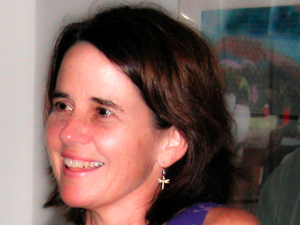
2003 Sarah Lynch with family at 2608 Lake View Avenue in Chicago
As I grew up and came to know Sarah’s parents, Frank and Susan Alling Lynch, this portrait was only accurate in describing them as belonging to an age that had grown up knowing the privations of the Depression and the hazards of World War II. Little wonder those benefiting from a higher education thanks to the GI Bill of Rights, like Frank Lynch, were looking for a more peaceful and better future for themselves and their children. Though I remember visiting Park Forest only once for a raucous Lynch family party, there certainly was nothing staid or ordinary about these cousins of mine. Indeed, they were all exceptionally full of life.
Years after I first met Sarah at that 1950s large family gathering in Park Forest, while playing tennis with her father Frank in Lincoln Park early one morning before work, I discovered that Sarah had just recently been in Nairobi, Kenya at the same time I had been. In later years, I followed with interest the occasional news of Sarah’s higher education progress at Kalamazoo College, Michigan State University, where she got her Masters Degree, and Cornell, where she got her PhD. in agricultural economics and met her later husband, Kris Wernstedt.
In January 2025, Sarah kindly agreed to talk with me so I could get a fuller understanding of her family life growing up in Park Forest, her relationships with her siblings and cousins, her unique education, and her career, focused as it was on important agricultural and ecological projects in among other places, Kenya, Cameroon and Tanzania in Africa, and the Everglades in Florida. Our conversation captured her family and trips, her political activism, and her long and distinguished career with the World Wildlife Fund.
The Transcript of the Sarah Lynch Interview is below.
Transcript of Sarah Lynch (SL) Interview
with William J. Bowe (WJB) on January 27, 2025
Frank Lynch in WWII, Marriage to Susan Alling, and Move to Park Forest
SL: Well, I guess it all started with my parents Frank and Susan Lynch. From my understanding, and I hope this jives with what you know too, Susan was a roommate of my Aunt Patsy, Patricia Lynch (Heffron), at the University of Wisconsin. Then we moved to Park Forest, Illinois. This would be right as World War II ended, around 1945.
WJB: How did your parents meet?
SL: My mother, Susan Babson Alling Lynch was the roommate of my Aunt Patricia Heffron at the University of Wisconsin. Before my father Frank came back from the war, he gone to the University of Chicago before he got drafted and went on to serve in the Army in The Philippines.
WJB: He didn’t he get to Singapore also?
SL: I never heard a story about Singapore, but that doesn’t mean that he might not have gone there on the way to the Philippines. His wartime military service was mostly in the Philippines in the Army.
WJB: I never knew that. Did you know where he was in the Philippines? Or when exactly that was?
SL: The person who knows this is my brother Dan. It was around 1945, and he was in Mindanao. I think of it as very Vietnam-like, in the sense of much more hamlet to hamlet, hand to hand, jungle kind of warfare.
WJB: Was he in the infantry?
SL: Yes, so he was slogging it out. Correct. And he was wounded several times. He got a Purple Heart for some kind of wound to his shoulder. He had shrapnel in his shoulder for the rest of his life. He had a bullet that grazed his head, and there’s a scar that he had always. And he was in some kind of combat where some of his teeth were lost. And he had malaria. So, it was a rough going.
WJB: Did he ever talk about that with the you children?
SL: Not much. It was not a subject for conversation. I think that there was a lot of PTSD involved, as we now would call it. It was not something that he relished talking about. I think he was very proud of his service. I think he felt that he did what he was supposed to do. But it was not pretty to do. It was pretty tough. And so he came back. And as I understand it, these are his war stories. Whether or not they’re true or not, I can’t vouch for that.
My grandma, Mary Catherine Casey Lynch, and perhaps some set of her parents, maybe my grandpa Patrick Columbus Lynch was there too, I don’t know. But they all drove out to Iowa, perhaps Des Moines, to see Frank in a military hospital upon his return.
Well, it was a very productive five, maybe six years after 1945-46 for my father. When he got back, he went back to school and met Susan. They got married in December 1947. My sister Laura was born a year and a half later in 1949. I was born in 1952. And then we moved to Park Forest, Illinois and he got his law degree. So, a lot happened in that five or six years after the war.
The Frank and Susan Lynch Family Years in Park Forest
WJB: After World War II, was he back at the University of Chicago?
SL: He finished his undergraduate degree at the University of Chicago and then got his law degree from Kent School of Law. So, in that four or five or six years after the war, he got his two degrees, his undergraduate and law degrees, got married, and had two children.
Then they moved to Park Forest, Illinois in the early 1950s. I was born in 1952. I think that before they lived in an apartment in Chicago for a while before the move to Park Forest. Park Forest was a very safety and security conscious development and was an exciting concept of suburban living at the time.
You know Frank more than Susan, of course. Susan came from Ann Arbor, Michigan, so she had a very different life than Frank, who had grown up living in Elmhurst, Illinois. Frank’s growing up was much more ethnically centered. Here’s where the Irish people lived, here’s where the Polish people lived, here’s where the Black people lived.
Park Forest was a brand-new suburb that was built post-World War II to accommodate all the returning GIs. So, it was a happening thing at the time.
WJB: I remember reading about Park Forest in my college studies in the early 1960s. My minor in college was sociology and we read the 1956 book The Organization Man. Maybe you remember that.
SL: Yes, Park Forest was considered just an excitingly novel way to live. The target audience were these returning GIs, who were supported by the GI Bill. They were getting educated, unlike their forebearers, and they had economic opportunities to live in single family homes in some cases. So, it was really an upsurge in the American Dream. It was a real reflection of that American Dream. People were coming and staying.
Park Forest was a totally planned community, but it was very economically diverse. They had rental units, they had smaller homes. It also had lots where people could develop and design their own home. Also, the cookie cutter houses that became such an important part of suburban growth were very much in evidence in Park Forest. It had been designed so the kids could walk to school, so that we could all walk to the library, and the public swimming pools.
WJB: In Park Forest, was that the only house that you lived in?
SL: No, we lived in three houses in Park Forest. It was sort of like the expression of moving on up. We started out in a small, maybe two-bedroom house on Oakwood Street in Park Forest. I don’t remember that house very well, because we moved from there to the next size up. We lived there for maybe five years. That was on Westgate Street. Then we moved to Warwick.
WJB: That would probably be the only house in Park Forest that I was ever in.
SL: Correct. Yes, that was a party house. Frank and Susan lived there for maybe 15 years. It was beautiful and it had a sunken patio. Do you remember that?
WJB: I just remember the bedrooms on an upper level and the long hallway.
SL: It was a big house, with five bedrooms and four bathrooms. It was a great house for us then. We were five children. Laura was born in 1949. I was born in 1952. David was born in 1955, Dan in 1957, and Austin in 1958. So, bing, bing, bing, bing. We had five kids, three boys and two girls. Most of our collective life was in that Warwick house. It was a pretty ideal place for a family full of kids. You could ride your bike anywhere, because the roads were designed to slow people down. You had a real sense of safety and security.
The Lynch, Heffron and Casey Cousins
WJB: When I was talking with John Lynch, Jr. recently, I was asking him about how the cousins got together, the Heffrons. and the two Lynch families and the Caseys. He said they were all in a great triangle away from each other, but they were always, always socializing.
SL: I think all that generation, Patricia and Walter Heffron and Jack and Roberta Lynch and my parents Frank and Susan, were very committed to family life. As John said, we got together a lot. Somebody was always having a birthday, or it was Christmas, New Year’s or the Fourth of July. All those times were spent at one house or the other. There was a rotation. It was just the way it was. Most of the time, of course, we were the furthest away. We were about 90 minutes travel time from them. That was a really big, hour and a half drive from both Aunt Patsy’s house and Uncle Jack’s house. It was kind of a schlep of a haul to get there. And it was a miracle that given all the alcohol that was being consumed that there was never a car accident. That was a real blessing looking back.
There was always a lot of cousin interaction. We had our peer cousins. Robbie Lynch, Uncle Jack’s daughter, and Ann Heffron, Patsy’s daughter, were all the same age. Similarly, for Steven Heffron and Laura Lynch, on and on. So, there were a lot these cousins overlapping in their years. Also encouraged back then was cross visiting with people coming and staying.
We also had Margaret and Teddy Casey, even though Margaret Casey and Teddy Casey were not our first cousins. They were Frank’s first cousins. But because of their ages, they were like our first cousins. All of them came over to our house. Laura and I often went into Chicago to go see Teddy and Margaret for excitement and total fun. We’d stay in the Lincoln Park apartment of Aunt Martha Gwinn Casey. I have many, many wonderful fond memories of being with Margaret and Teddy and Aunt Martha and Uncle John Casey in their Chicago apartment, eating a leg of lamb.
Frank and Susan Lynch and Democratic Politics in Park Forest, Illinois
WJB: Here’s another thing I wanted to catch up a little bit on. Your mother and father were both very interested in politics. If I remember correctly, your father, was the Rich Township Democratic Committeeman when you were in Park Forest.
SL: Correct. He was spending time on that.
WJB: How did that come about? How were those politics formed?
SL: The middle school influenced my father Frank’s political thinking, I don’t know how exactly. His schooling was all public school, all stable. And he was pretty much a progressive of his day. Park Forest was a place where, a lot of these GIs were pouring back into the economy from all over the United States. I don’t think they were just Chicagoans, but from all sorts of places. It was kind of a dynamic place. For my whole growing up, I remember him being the Democratic Committeeman for Rich Township. He was a Rich Township Democratic Committeeman up until the Vietnam War in 1968. For all the 1950s, when I’m cognizant, he was involved with that.
Later, the Democratic Party was in a transition period away from the old Democratic Party of patronage. We didn’t have any patronage in Rich Township. There was none of that, but we were in Cook County when Mayor Richard J. Daley was the head of the County’s Democratic Party’s organization. Frank did only volunteer work, but Daley was not interested in the outer suburbs. Park Forest was a Republican outer suburb, so we were kind of in that political no man’s land.
But there were a number of Democrats in Rich Township. Frank’s precinct captains were under his purview to organize. Especially in election years, we had a lot of activity with meetings and whatnot. On election night, it was just a wonderful event for us as kids, because the headquarters would be our house. And, and so there was a lot of preparation for election night. Back in the day, you had your committee and your precinct captains from all over the town of Park Forest. They were responsible for calling in the election results. They were unofficial, but good enough to help convey to the higher ups in the Democratic Party exactly what was going on with respect to the votes there.
On election night, Frank would have installed in the house more phone lines so that we had multiple phone lines. On that big wall in the living room that was really big, he would put butcher paper. They would have all the precincts and the names of the candidates. In the rooms, they would set up the telephone. There’d be some set of scribes, and they had the old-fashioned adding machines. At that time, they were probably phoning in all of those results downtown to the big boys with Mayor Daley.
WJB: I think, the headquarters for the Cook County Democratic party at that time was for many years the Morrison Hotel. After that got torn down, they moved it to the Sherman Hotel, also now torn down.
SL: Yes, that was the big time. Susan was also the backbone of organizing all of these Democratic Party events, and she had always brought in lots of food and drink. As the polls closed, and people had called in their numbers, they all came over to our house. We had big revelry, excitement, and total fun. I do credit my parents for my continuing interest in electoral politics. To this day, I’m very involved in elections and canvassing or being an election judge or something. And I attribute that all to them and to the excitement that I felt about politics. That was a very fun part of our growing up.
Early Education
WJB: Tell me a little bit about your own schooling. Was it all in the Park Forest before you went to college?
SL: That’s another interesting facet about our growing up. We moved to three different schools. I wasn’t in school when we moved to the first house. Then, in our second house, I changed elementary schools. The middle school and the high school were centralized. All of these were public schools, all stable. All of us did the same thing. Laura, Sarah, David, Dan and Austin, we always went through the same process for middle school and high school. It was all really good public school education at the time. Then, I went on not just to college, but to graduate degrees.
WJB: Did you get your graduate degree at Cornell?
SL: Yes, but I did meander a little bit. I graduated from high school in 1970. I was interested in political science and thought that I might pursue that or perhaps a legal degree. That seemed like a good combination in the day. They kind of went together. So, I went to George Washington University here in Washington, DC. And I volunteered at Abner Mikva‘s Congressional office at the time. It was before he became a judge.
WJB: That’s interesting to me because I did volunteer work for Mikva as well. When I was at law school, I did some legal research for one of his campaigns.
SL: I was more of an office gofer than a legal researcher, because I was a freshman in college at the time. But, he was a remarkable man. He was a good and great man to work for as an intern.
WJB: I also caught him. After he retired, and he occasionally worked as an arbitrator. And lo and behold, as Encyclopaedia Britannica’s General Counsel, I had a major patent lawsuit before him. He immediately told the opposing parties that he had a possible conflict of interest. He said to both parties, “You should know before you proceed with the arbitration that my wife years ago worked for Encyclopaedia Britannica. Do either of you have a problem with that?” I thought if not a good shake, Britannica would at least get a fair shake. Neither side saw any problem. At the very end of Mikva’s life, I would see him turn up occasionally for lunch with some of his dear political friends at The Cliff Dwellers. It was a nice place for him to go and not be bothered by anybody. He could just talk with some of his old political friends and have a nice lunch.
What was your major at George Washington University?
SL: I only finished one year at George Washington before I dropped out to get some experience and understanding of things. So, it was probably just general stuff.
Then I decided to get my master’s degree oriented towards political science. I did take some philosophy courses and the like. Anyway, it was all good. But I was not happy. I didn’t like it. In later years, a lot of kids do gap years. I think there’s a real good sense in doing that. I finished my first year and then I came back and quit school.
I worked for a year living in Chicago. I got a job in a law firm. I worked as a waitress. In the day, you could be working minimally and still make enough money to live. There were two other women that I knew and we got an apartment up in Evanston that we could afford it. You didn’t have internet to pay for. You didn’t have any cell phones. At any rate, I was able to work and save enough money to go over to Europe for the summer, mainly France and Germany. I traveled around with a Eurail Pass. I travelled around to England and France and I went to a language school in Tours in southern France. I got two or three weeks of French language training. Then, I met a German woman who said, “Come visit.” So, I went to Germany before I decided I needed to go back to school.
An Education in Agricultural Economics
In a very bizarre set of circumstances, I ended up starting in Kalamazoo College about a week after I got back from Europe. I was a transfer student, and they accepted me on a Friday, and I started school on Monday. That turned out to be an incredibly fortuitous thing because Kalamazoo College was the right school for me. It’s a very small liberal arts college in Michigan, but it has a very innovative foreign study program. After about six months at Kalamazoo College, I was on my way to Kenya. Kalamazoo was one of the early schools to develop relationships with different African programs in different African countries and universities. There was a program in Ghana, one in Senegal, and one in Nairobi, Kenya. So, I spent six months in the University of Nairobi in Kenya and around 1972 or 1973.
WJB: I recall that because I found your father said to me one day when I had just returned from Kenya and Nairobi, “Did you know Susan was there then?”
SL: Okay. Interesting. At first, Frank was not very happy at all that I was going to Kenya. He was very resistant to it.
WJB: Was he concerned about security?
SL: Maybe, I don’t know exactly, but he was an Anglophile. He was a Western civilization devotee. He did not see any real benefit or learning experiences that were worthy of my time and money and his money.
WJB: So how did that, how did that experience then translate into getting you into a graduate degree program at Cornell?
SL: A hundred percent. It was life changing, totally life changing. In Kenya at the time, food and self-security the time was just a dominant issue. And I fell in love with the continent of Africa. I had not only got a chance to visit Kenya, but also Ethiopia, Sudan, and Egypt. I got to see a small, but very influential part of Africa. I decided that I wanted to have skills that could be useful in returning to Africa in some capacity. As I said, agriculture, food, and self-sufficiency issues were very dominant conversations at the time.
A Michigan State University Education in Agricultural Economics
WJB: What was next in your education?
SL: Well, on the way to Cornell I decided I was going to get a degree in something related to food production. Once I graduated from college in Kalamazoo, I had a mission. I graduated with a bachelor’s degree in political science. I was now committed to do something in the field of agriculture. I didn’t know much about agriculture, being a suburban girl, but I went to work at the Chicago Board of Trade for a year and a half. With some further interest in agriculture, I got practice and some experience that gave me a better understanding of what agriculture was all about.
Then, after I decided to get my master’s degree, I went to Michigan State University, and I got a further degree in agricultural economics. I graduated in 1979.
Africa and Work with USAID in Cameroon
Then from 1980 to 1984, I was in Cameroon in central West Africa, working on a USAID (United States Agency for International Development) financed project on agriculture. I was working for the Cameroon Ministry of Agriculture. My office was in the Ministry of Agriculture and my colleagues were Cameroonian. I was there for about three and a half years working on this project. The mission was to try to jumpstart agricultural production so Cameroon could be more food self-sufficient.
A PhD in Agricultural Economics and Marrying Kristopher Wernstedt
SL: After Cameroon, I came back and that is when I went to Cornell and I got my PhD in agricultural economics.
WJB: I gather Cornell had a specialized program in that area.
SL: Correct. Cornell and all the land grade colleges, there’s one in every state, have an Agricultural Economics program, but many of them focus on US production, corn and soybeans as you would expect. Cornell had a reputation in international agriculture and I was interested in overseas economic development and things like agricultural development in developing countries. Cornell was a great for those kinds of studies, so that’s where I went. I in 1985 and finished in 1991. In addition to a PhD, I got my MRS, because that is where I met Kris.
WJB: Was he going to school studying in the same area?
SL: No, he was in city and regional planning, but we met there and got married in 1988. I had a slight detour because I had a baby. That was where our oldest Claire was born in 1990. I always say I was two months, two chapters short of finishing my dissertation. Those last two, two chapters were pretty tough, because I now had a baby, we moved, and we bought a house and all. Finally, we walked across the graduation stage in 1991.
WJB: So, you’re now with two kids.
SL: One, one at that point.
WJB: So catch me up. You’ve graduated one child, Claire.
SL: My career in international development took a detour because now I had a husband whose work was in the United States and one child, Claire. Then Noah came in 1993 and we were living in Washington, D.C. I was not going to do the kind of travel that you would have to do if you were trying to maintain an international career. So, I switched to domestic agriculture and worked on various aspects of agriculture in the United States. My initial six, or so years of that was working part time. I worked at the U.S. Department of Agriculture’s Economic Research Service for a couple years.
WJB: Where were you living at this point?
SL: We came in 1991 to Washington, D.C. and we bought a house in Tacoma Park, Maryland.
WJB: Is that where I visited you that time when the kids were relatively young.
SL: Yes, and that’s where we still live right now. We’ve been in the same place for 34 years now and raised both children here. They both went to school and graduated here. This has been home for us.
Career at the World Wildlife Fund
At some point, I decided to get into much more agriculture and conservation. I got a little disillusioned with U.S. agricultural policy. As much of the current news reports have told us, it’s pretty clear that our agricultural system produces a lot of calories, which is good. But most of it is food that nobody should eat. So, I moved more into agriculture and conservation. How do we produce food, but don’t destroy the planet at the same time? After working part time a number of years, I started working full time at World Wildlife Fund.
WJB: Where was Kris working at this time?
SL: Kris, he got his first job, his job after he got his PhD. What brought us to Washington, D.C. and anchored us was his job at a think tank called Resources For the Future. RFF was also looking at economic policy and its impact on the environment. He worked there for 15 years plus. Then he decided he wanted to have more of an academic life and a different balance than just the strict research that he was doing at RFF on environmental policy issues. So, he got a job at Virginia Tech, which is the Virginia Polytechnic Institute and State University. That’s where he finished off.
WJB: What did he teach there?
SL: He’s been teaching city and regional planning, teaching tools for planning and environmental policy in an urban setting. So, he did that and I was working on agriculture.
Then in 2018, we got a chance to go back to Africa. I was seconded by WWF to our WWF Tanzania office, which is in Dar es Salaam. While I was working there, Kris came over a couple times, and he decided that he would apply for a Fulbright and he got a Fulbright to be in Dar es Salaam. So, we lived there together for two years at the waning years of our career.
WJB: That’s a great kind of sabbatical to get when you’re still working.
SL: Correct. It was a little bit.
WJB: I remember you worked at the World Wildlife Fund on the impact on wildlife that Everglade drainage had. Can you give me an overview of that particular project?
SL: Yes, that was probably one of my most fun, productive, and greatest, working experiences. The WWF, like many conservation organizations, was focusing on those areas being very adversely impacted by agricultural production. In the case of the Everglades, Florida is a state that has completely manipulated its ecosystem and the River of Grass fable no longer exists because it’s been diked, damned, and drained. As a result of agriculture, there’s been a lot of pollution that caused the Everglades to be very much degraded. The question was could we do anything about it.
There are multiple problems, but one of them is that there was too much phosphorus coming into Lake Okeechobee. The Lake is a huge reservoir of water for the Everglades, and the main source of he phosphorus was cattle ranching north of the Lake. One issue was the way the water was coming into the Lake. It was coming in at the wrong time. So, the work that I did was to develop a project to solve this. It was a lot of fun because in the the development of the project we had a wonderful collaboration with cattle ranchers, other scientists, and local government people. We all saw that this was a problem and we had to find a solution. We worked together, and we came up with something innovative at the time called a payment for environmental services program. The idea was that could you pay cattle ranchers to provide an environmental service just like you pay people to produce corn or you pay them to produce cattle.
WJB: In this case, was the payor the State of Florida or the federal government?
SL: Correct. It was in this case a payment for the provision of the environmental service of retaining water on ranch land. That held up phosphorus that otherwise would have come into Lake Okeechobee. The thing is it’s so interesting is that in Florida millions of dollars have been spent to drain to drain the water as fast as possible, because you don’t want to have a swamp. Now what we were saying to cattle ranchers is, Since your cattle can be moved easily you know to higher ground, we want you to. We want to pay you to hold up that water on your property so that it doesn’t come off so fast, it seeps down back into the aquifer with all these other potential benefits.”
And we’ve devised with them and with others methods and documented what that those benefits were. So, it was a great, I spent about eight to 10 years doing that, working to develop the pilot project, getting it funded, and then implementing it.
WJB: I imagine that must have been enormously complicated, because you’ve got to understand the whole thing, including in exquisite detail the topography, all the slopes, and the drainage.
SL: Yes, all of that and then you layer on top of that government policy state, local state and federal. I’ll just give you one example. We had to work out a very special arrangement with the US Army Corps of Engineers, and with Fish and Wildlife Service because, there were legal issues of concern about takings, and there were issues of concern about threatened endangered species. There’s a lot of policy overlay when you talk about at that scale. We were working on thousands and thousands of acres. It was a complicated thing.
That was what was so interesting and fun about it. We had some really great people working on it. The people were kind of all, even though we were all very different backgrounds and different politics and different just about everything. There was a sense of like, “Can we do this. Can we figure it out together?” That was why it was a very fun project and is an example of the kind of interface that I was trying to work on with my career. Is there a way to take conservation and make it work on agricultural lands and get the outcomes, and environmental improvements that we want to have.
WJB: Now that you are quasi or completely retired from that endeavor, you’ve got more time for politics. I think you posted somewhere a picture of you and Jane Fonda at a demonstration in DC.
SL: Yes, and I was arrested.
WJB: I didn’t realize you were a jailbird.
SL: Yes, I went to jail that day. It was pretty tame though if you remember the 1968 Democratic Convention. That that was wild. This was a demonstration where some of us, got arrested trying to bring attention to various climate concerns that a lot of people have. Jane had already been arrested five to four times. She didn’t get arrested that day because I had she would have had to spend a month in jail. But was outside and she waited for absolutely everybody to be processed and there were probably 200 of us. Those were the simpler days right, six, eight years ago before the Trump mega onslaught. Now, there are more serious battles that have to be fought many and more key issues that are under threat. I do see this as a time of great trauma for the country now. I mean it’s really hard to go to bed at night and be feeling good about where we are as a country.
WJB: Now catch me up a little bit on how Washington State became a such a great place for you to travel to.
SL: Yes, Yes. Kris’s grandparents bought land in on an island in the San Juans back in the 1930s. It was kind of homesteading. They bought five acres on this island and some friends theirs also bought some land. Kris’s grandfather was a fish surveyor for the the Forest Service of Washington State, so he was a very outdoor kind of person and this was pretty rustic living. We ended up inheriting this piece of property.
We started going to it when Noah was about two or three years old. That would have been in 1994 when we started going as a family out to the island is called Waldron Island It has just become a mainstay for us in the Pacific Northwest.
WJB: Do you fly into Seattle and take a ferry?
SL: We do, but it’s much more complicated than that. Waldron is unincorporated, it has no ferry, and it doesn’t have grid electricity. The citizens, the year-round residents of Waldron, voted not to allow development because they didn’t want to see what happened to the San Juan islands. That was where you had Bill Gates buying one and turning it into a private island. So, no development is allowed. There’s no grid electricity. It’s pretty, and it’s pretty rustic. It’s rustic living but fabulously beautiful so we do go out there a lot.
We’ve done many different travels, though. We have a goal, Kris and I, to go to all of the national parks. That requires lengthy car trips.
WJB: What’s your percentage now?
SL: Close to two-thirds. There are 63 National Parks. While there are many National Monuments and many National Seashores, of the 63 National Parks, we’ve been to 43 of them. Next year we’re going to knock off another 10, so we’re making progress. With our love of the Pacific Northwest, we now go out to Waldron Island for maybe three months a year. In the summertime, we have a whole community out there of both people who live there year-round, and we’ve become very close to the year-rounders and the summer folk like us. What’s wonderful is that among the summer folk are all four of Kris’s first cousins. So, Waldron is also very much of a Wernstedt family reunion. Every summer we get together with our Wernstedt cousins. They’ve become very close and that’s great.
Claire and Noah Lynch
WJB: Catch me up a little about Claire and Noah. Are they both out of school now and all grown up.
SL: They are out of the house here. Claire is about 34 now. She graduated from Oberlin College and is quite an accomplished outdoors woman herself. She has hiked the Pacific Crest Trail and the Appalachian Trail, and as you know our Southern Border.
WJB: Yes, I followed that.
SL: Now she’s turned in her trekking shoes and is a program officer for the Annie E. Casey Foundation. That’s a foundation that’s located in Baltimore and committed to ending childhood poverty, of which there’s a lot of. She’s a grant maker, so she works with a lot of organizations across the country. The foundation is focused on identifying ways of reducing childhood poverty. She’s lives nearby, about a 15 minute journey.
WJB: My mother Mary Gwinn Bowe was a Baltimorean.
SL: Oh, yes of course. I know that connection. She’s doing really well and she and I are heading off to New York City next month for a February weekend going to see some shows. We’re looking forward to that.
Noah has chosen to live on the other side of the country. He lives in Seattle. He graduated from the University of Western Washington, near where my brother David lives. He’s very focused on the question of how we make cities better places to live. He has done a lot of work on housing by working on that issue for NGO organizations in both Bellingham and Seattle. Now he works for on improving urban transit. He’s in Seattle working for a governmental entity that’s responsible for rapid transit. So, he’s out there.
We’re lucky to see both of them frequently. They’re doing well, they’re doing real well.
WJB: Well, I think we’ve covered a fair amount of ground and a pretty short period of time. I’m glad that I’ve gotten some gaps in my knowledge of what you and your family have been up to. Hopefully, besides us, it may later be of interest to some others as well. Thanks so much.
SL: Thank you. Take care.
[The transcript has been edited for length and clarity]

